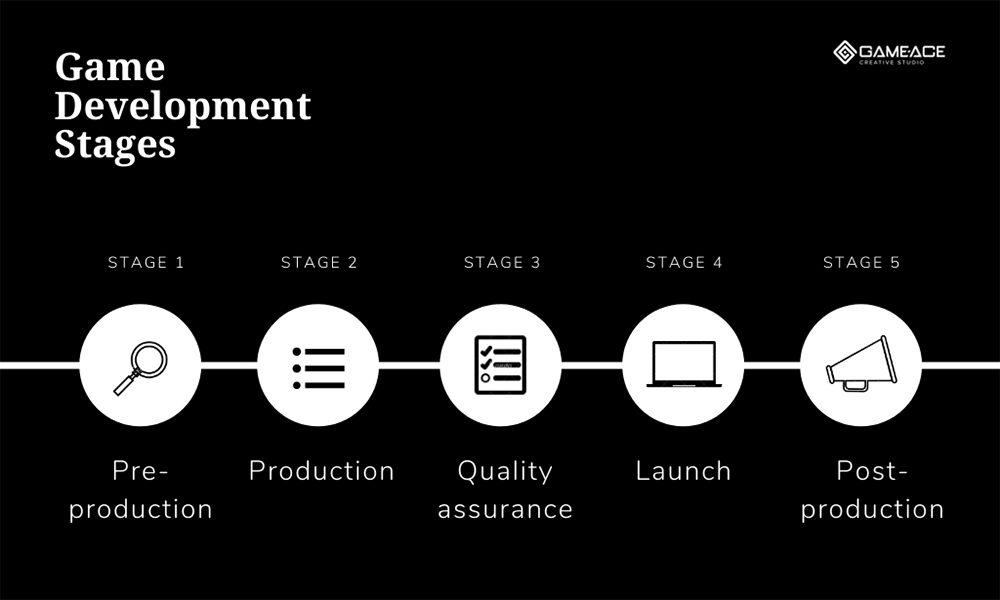Game development involves several stages, starting with the pre-production phase, where developers brainstorm ideas, decide on themes and game mechanics, and create a design document to guide the project. The production phase follows, where developers focus on creating game assets, programming the mechanics of the game, integrating gameplay elements, and performing quality assurance. A comprehensive marketing strategy is necessary to ensure that the game reaches its intended audience, and the post-production phase involves regularly updating the game, fixing bugs, and providing customer support to maintain player satisfaction. The key to developing a great game is thorough planning and continuous updates and support after launch.
From Concept to Launch: The Game Development Process Explained
The Pre-Production Phase
The pre-production phase is the initial stage of developing a game. It involves brainstorming ideas, deciding on the key themes, game mechanics, and strategies to develop the game. In this phase, developers or the team involved in the development process, will be considering the scope of the project and the technical requirements for the game. The pre-production phase can take several weeks to months.
Ideation
The ideation process involves generating ideas that will form the foundation of the game. Developers will use different techniques such as storyboarding, conducting focus group research and brainstorming sessions to develop game concepts. The goal is to come up with a unique and creative game idea that will provide players with an enjoyable and satisfying gaming experience. Ideas can range from games that are simple, fun and entertaining to games that are more complex and strategic.
Design Document
Once an idea has been chosen, developers will create a design document to organize all of the ideas and concepts for the game. The document will outline the story, game mechanics, and art style. It will also include details about the target audience, gameplay features, and monetization strategies. The document will guide the development team throughout the entire game development process.
Prototype Development
Once the design document is completed, developers will create a prototype of the game. The prototype is a basic representation of the game that will help developers visualize and test the game’s mechanics. The prototype is usually simple, with basic graphics, sound and gameplay mechanics, and it will not necessarily bear any resemblance to the final game.
The Production Phase
In the production phase, the team focuses on the actual development of the game. This stage involves creating and refining game assets, integrating gameplay mechanics, and fixing technical issues. The production phase can take several months to several years depending on the complexity of the game.
Art Development
The art development phase involves creating and refining the visual elements of the game, such as characters, background settings, and objects. The art style should be consistent with the game’s vision and story. Developers can create assets either through hand-drawings or using software tools like Adobe Photoshop or Autodesk Maya.
Programming
Programming is the core aspect of game development that brings the game mechanics to life. Developers will use programming languages like C++, Python or Java to integrate game mechanics and features. The programming stage can be challenging, especially given the need to create optimized code that can run smoothly on different systems.
Gameplay Mechanics Integration
After developing the initial prototypes, the gameplay mechanics are integrated into the game. At this point, graphics, sound and special effects are combined into one cohesive experience. Testing is done to ensure the game is balanced, fun and not too difficult for the intended audience. Iterative testing and refinement continue until the game is polished and bug-free.
QA (Quality Assurance)
QA involves identifying and fixing crucial bugs that may lead to a poor customer experience. QA starts with simple testing of the game mechanics, graphics, and sound before moving to more complex testing, such as load testing and stress testing. The goal is to ensure that the game runs on all supported platforms without any significant issues.
Marketing
A comprehensive marketing strategy is necessary to ensure the game reaches its target audience. Marketing activities include creating a trailer or demo of the game, social media posts, influencer marketing, and paid advertising campaigns. Proper marketing can significantly increase the reach and popularity of the game and lead to increased revenue.
The Post-Production Phase (Launch)
The post-production phase involves the activities that take place after the game is launched. These activities include game updates, bug fixes, and customer support. Some of the most successful games today continue to provide regular updates, new levels, new game modes and features.
Support and Maintenance
Customer support is crucial when launching any game. This includes providing support for customers who may experience technical challenges or any other issues with the game. Developers should stay responsive to user reviews, feedback, and complaints so that they can continually improve the game and maintain customer satisfaction.
Update Cycles
To maintain the popularity of a game, developers should continually update the game. A new level, game mode, or ability can significantly increase interest and attract new players. Monthly or quarterly updates can maintain players’ interest and make them more likely to spend money on in-game purchases.
Conclusion
The game development process is complex, and it can be overwhelming to anyone starting on this journey. However, it will be a rewarding experience for those that put in the hard work. Remember, thorough planning during pre-production, refining and polishing during production, and continuous updates and support after launch, leads to the development of a great game that will provide players with an enjoyable and satisfying experience.
